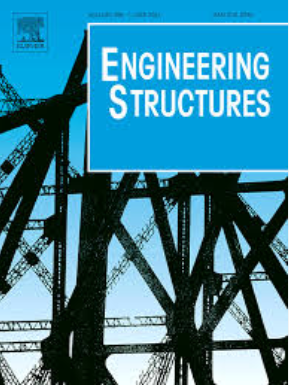Multi-objective seismic design optimization of self-centering bridges with novel mechanical hinges
IF 6.4
1区 工程技术
Q1 ENGINEERING, CIVIL
引用次数: 0
Abstract
Self-centering rocking bridge piers possess significant potential for improving post-earthquake resilience and reducing the post-earthquake repairs for bridges. However, due to the multi-parameter nature of such piers, challenges remain in designing the self-centering bridge piers and ensuring balanced performance across multiple piers. To addresses these gaps, this study proposes a general multi-objective seismic design optimization framework for self-centering rocking bridges. The framework includes input-output dataset preparation, XGBoost model training, Pareto front calculation, and optimal solution selection. The framework is illustrated on a self-centering bridge equipped with hemisphere-based rocking hinges (HRH), an innovative device previously developed by the authors. Results show that using a machine learning method (XGBoost herein) to develop surrogate model as a substitution for the finite element model improves optimization efficiency by at least 73 %, without compromising accuracy. The optimized bridge with HRHs achieves balanced performance among piers, with a 63.4 % decrease in shear difference and a 11.4 % reduction in displacement difference compared to the benchmark bridge.
新型机械铰链自定心桥梁多目标抗震设计优化
自定心摇摆桥墩在提高桥梁震后恢复能力和减少桥梁震后修复方面具有重要的潜力。然而,由于自定心桥墩的多参数特性,在设计自定心桥墩和保证多桥墩间的平衡性能方面仍然存在挑战。为了解决这些问题,本研究提出了一种通用的多目标自定心摇摆桥抗震设计优化框架。该框架包括输入输出数据集准备、XGBoost模型训练、Pareto前计算和最优解选择。该框架以自定心桥为例,桥上装有半球形摇摆铰链(HRH),这是作者先前开发的一种创新装置。结果表明,使用机器学习方法(本文中的XGBoost)开发替代模型作为有限元模型的替代,在不影响精度的情况下,优化效率至少提高了73% %。优化后的HRHs桥墩间性能平衡,与基准桥相比,剪切差减小63.4 %,位移差减小11.4 %。
本文章由计算机程序翻译,如有差异,请以英文原文为准。
求助全文
约1分钟内获得全文
求助全文
来源期刊

Engineering Structures
工程技术-工程:土木
CiteScore
10.20
自引率
14.50%
发文量
1385
审稿时长
67 days
期刊介绍:
Engineering Structures provides a forum for a broad blend of scientific and technical papers to reflect the evolving needs of the structural engineering and structural mechanics communities. Particularly welcome are contributions dealing with applications of structural engineering and mechanics principles in all areas of technology. The journal aspires to a broad and integrated coverage of the effects of dynamic loadings and of the modelling techniques whereby the structural response to these loadings may be computed.
The scope of Engineering Structures encompasses, but is not restricted to, the following areas: infrastructure engineering; earthquake engineering; structure-fluid-soil interaction; wind engineering; fire engineering; blast engineering; structural reliability/stability; life assessment/integrity; structural health monitoring; multi-hazard engineering; structural dynamics; optimization; expert systems; experimental modelling; performance-based design; multiscale analysis; value engineering.
Topics of interest include: tall buildings; innovative structures; environmentally responsive structures; bridges; stadiums; commercial and public buildings; transmission towers; television and telecommunication masts; foldable structures; cooling towers; plates and shells; suspension structures; protective structures; smart structures; nuclear reactors; dams; pressure vessels; pipelines; tunnels.
Engineering Structures also publishes review articles, short communications and discussions, book reviews, and a diary on international events related to any aspect of structural engineering.
 求助内容:
求助内容: 应助结果提醒方式:
应助结果提醒方式:


